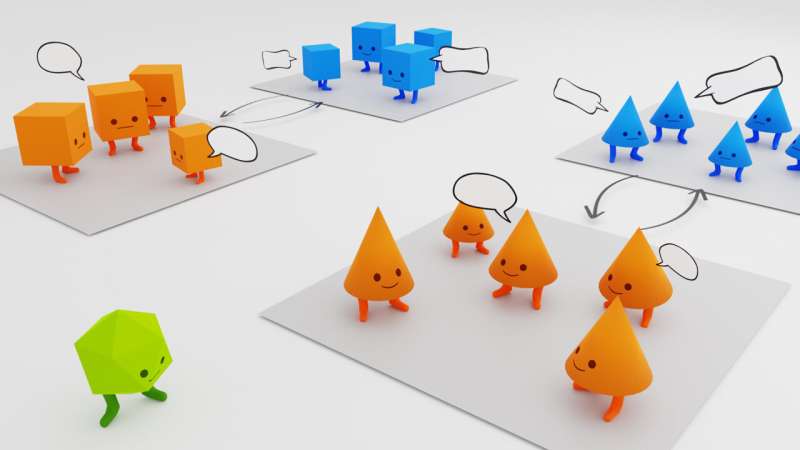This article has been reviewed according to Science X's editorial process and policies. Editors have highlighted the following attributes while ensuring the content's credibility:
fact-checked
peer-reviewed publication
trusted source
proofread
When languages collide, which survives?

Language has the power to shape our perceptions and interactions with the world. Different languages can coexist, but their dynamics are shaped by the communities that speak them—and how those communities interact with each other.
Shared beliefs, assumptions, and feelings toward specific language forms often determine whether a specific language will survive or disappear, especially within multilinguistic societies.
In the journal Chaos researchers from the University of the Balearic Islands in Spain incorporate language ideologies, along with the impact of interaction between individuals with opposing preferences, on the language shift process. The paper is titled "Modeling language ideologies for the dynamics of languages in contact."
"Our findings lead to the conclusion that the more mixing that occurs between different social groups, the more challenging it becomes for language varieties to coexist within the same society," said author Pablo Rosillo-Rodes. "The dynamics of the system has a subtle dependence on both the preferences of the speakers and the coupling between different communities."
Existing work from sociolinguistics showed that the social prestige of a language was considered the main factor leading to its extinction or survival. Insights in language contact from these previous studies, in combination with sociolinguistic studies on language ideologies, were used by the researchers to present a comprehensive picture of how language varieties are distributed in societies.
The team chose a quantitative approach based on a society in which only one language with two varieties, the standard and the vernacular, existed. The resulting mathematical model can predict the conditions that allow for the coexistence of different languages, presenting a comprehensive view of how language varieties are distributed within societies.
Individual preferences for specific languages play a pivotal role in language dynamics, sometimes overcoming any social prestige associated with a particular language variety.
Under certain conditions, various levels of interaction between people with different language preferences can lead to the extinction of one of the languages. However, the event can be followed by the return of the dead language and ultimately its eventual dominance. By studying finite-size effects, the researchers also found that the duration of the coexistence of language varieties increases exponentially with society size.
"This work influences linguistics with quantitative perspectives, contributes to models of applied mathematics, and encourages interdisciplinary collaboration while emphasizing the need for more comprehensive data in computational linguistics," said Rosillo-Rodes. "It holds significant insight for language planning and public policies aimed at preserving endangered languages."
More information: Pablo Rosillo-Rodes et al, Modeling language ideologies for the dynamics of languages in contact, Chaos An Interdisciplinary Journal of Nonlinear Science (2023). DOI: 10.1063/5.0166636
Journal information: Chaos
Provided by American Institute of Physics





















